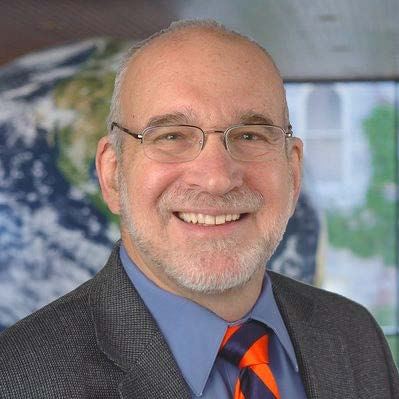Using Simplicity to Address Contaminant Problems Under Conditions of Uncertainty, AKA “Keeping It Simple:” Part II
Date and Time: Tues, May 2, 2023, 10 AM - 2:15 PM
Location: Zoom Webinar
Speaker:
- Dr. Donald I. Siegel. Partner, Independent Environmental Scientists (Manlius, NY); Emeritus Laura J. and L. Douglas Meredith Professor of Earth Sciences (Syracuse University, NY)
Continuing Education Credits:
NOTE: This is the first time this course is being offered in CT. This course was previously offered in MA on 3/22/23. The CT State Board of Examiners of Environmental Professionals (LEP Board) has approved this course/webinar for 4.0 hours of continuing education credits (CTLEP-577W). This program has also been approved for NY Professional Engineering and Professional Geologist for 4 PDH(s) as Course # 2023844. The MA LSP Board approved this course for 4 techncial credits as Course # 1799.
Fees:
- EPOC Members: $150
- Non-members: $250 (consider joining EPOC at this time to receive the member rate for this program)
- Gov't Employee/Students: $75
Course Description:
LEPs and other practitioners regularly conduct subsurface investigations to obtain information for evaluating, reducing, or removing contamination during remediation efforts. However, certainty of fate, transport, and attenuation can seldom be achieved because of unknown or unanticipated subsurface conditions. At some sites, cost benefit analyses may even indicate that a complex, expensive, and time-consuming effort will not yield an outcome better than a simpler approach.
Part I of this series, “Using Simplicity to Address Contaminant Problems Under Conditions of Uncertainty, AKA Keeping It Simple,” was delivered by Professor Siegel to EPOC in May and October (repeat), 2021, and is also available as an on-demand class. That course focused on how fundamental uncertainties in understanding Darcy’s Law can lead to equivocal results with respect to forecasting contaminant migration. Note: You can take this class without having taken Part I.
This course offering, Part II of the series, explores how common misunderstanding of the hydraulic potential (head), and surface water and groundwater interactions also lead to false or equivocal understanding of groundwater flow and contaminant transport. For example, groundwater and surface water exchange can develop flow paths that literally cross what many presume are no-flow boundaries. Combining water levels from piezometers at multiple depths in unconfined aquifers to make a potentiometric surface map not only is wrong but leads to incorrect interpretations of vertical migration of contaminants.
Course Agenda:
(30 minutes) 10:00-10:30am
Necessary Review of Part I: Why Uncertainty is Much Greater Than Assumed
- Subsurface heterogeneity
- Darcy’s law and scale dependency
- Why it can be difficult to determine where flow paths move
(55 Minutes) 10:30-11:25am
Practical Hydraulic Potential Theory Under Water Table and Confined Conditions
- How water moves from low to high pressure
- How to properly construct a potentiometic surface
- Constructing water table maps with no data
(55 Minutes) 11:25-12:20pm
Nested Flow Systems and Hydraulic No-Flow Boundaries Separating Them: Theory and Practice
- History of groundwater hydraulics and drivers of flow: engineering versus geological understanding
- TOPODRIVE—the amazing and relatively little known USGS online finite element model to scope out complex hydrogeology and flow paths that can deliver contamination
- Surface water-groundwater interaction: the hyporheic zone and when streams may not be hydraulic boundaries for contamination or groundwater flow.
(10 minutes) 12:20-12:30pm
Q&A
12:30-1:00pm - BREAK
(60 minutes) 1:00-2:00pm
Case Studies: Practicing What You Learned
- Critique of three hydrogeologic cross sections from professional reports (anon.)
- Transport of PFAS at stream hydraulic boundaries: Grand Rapids, MI.
- Transport of PFAS at Hoosick Falls, NY
(15 minutes) 2:00-2:15pm
Recap and Q&A
Speaker Biography:
Dr. Donald I. Siegel

Partner, Independent Environmental Scientists (Manlius, NY); Emeritus Laura J. and L. Douglas Meredith Professor of Earth Sciences (Syracuse University, NY); Hydrologist-Geochemist, U.S Geological Survey; B.S. Geology; University of Rhode Island; MS Geology and Geophysics, The Pennsylvania State University; PhD, Hydrogeology, University of Minnesota. President Geological Society of America (GSA), 2019-2020. Chair of the U.S. National Research Council (NRC) Water Science and Technology Board (2010-2013), Associate Editor for most water related journals, Book Editor for GSA; Fellow American Geophysical Union (AGU), American Association for the Advancement of Science (AAAS) and The Geological Society of America (GSA); Birdsall-Dreiss Lectureship, Distinguished Service Award, and O.E. Meinzer Award (Hydrogeology Division, GSA); William Wassertrom Award for Excellence in Graduate Teaching, SU); >150 peer reviewed publications on groundwater contamination and groundwater-surface water interactions. Over 100 consulting projects involving hydrocarbons, solvents, hydraulic fracturing, fugitive outdoor and indoor air emissions, PFAS, and toxic elements. Testimony to US Congress, EPA, and United Nations on hydraulic fracturing.